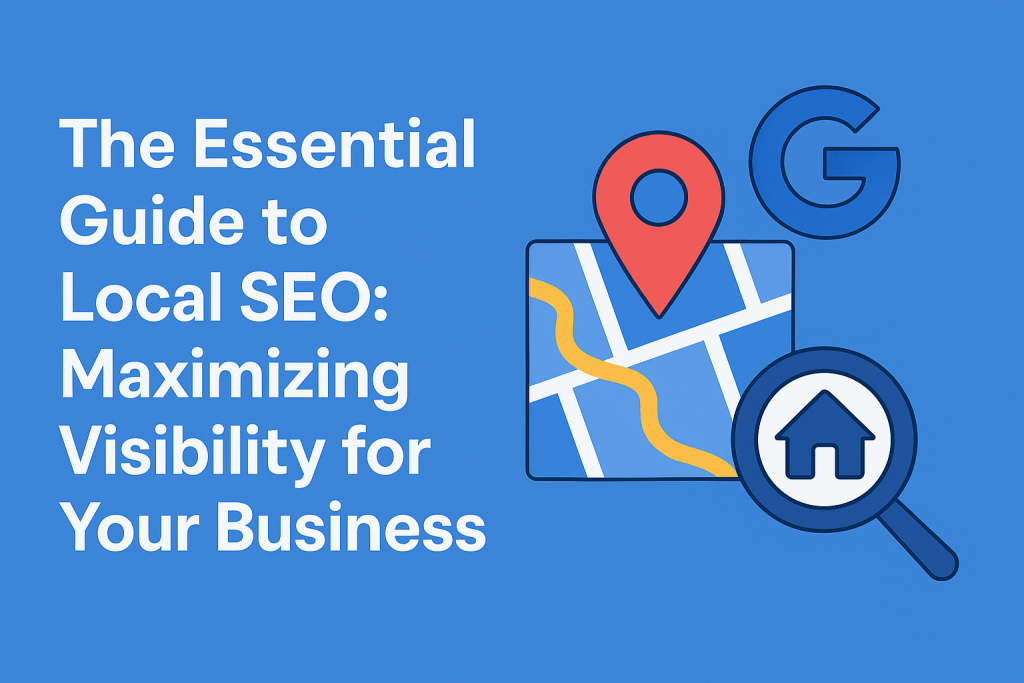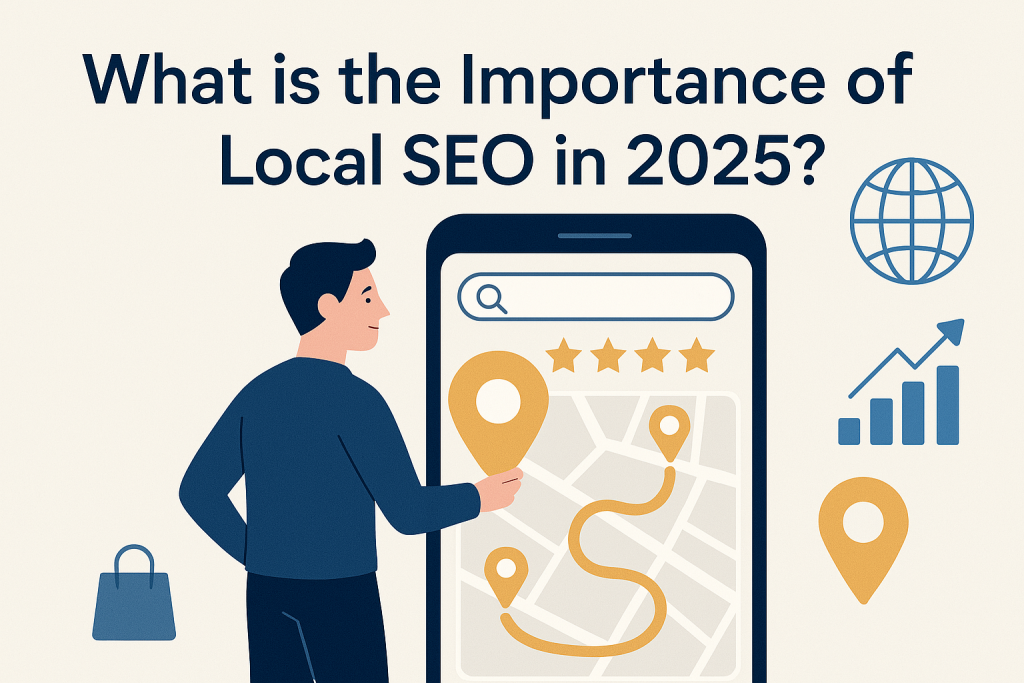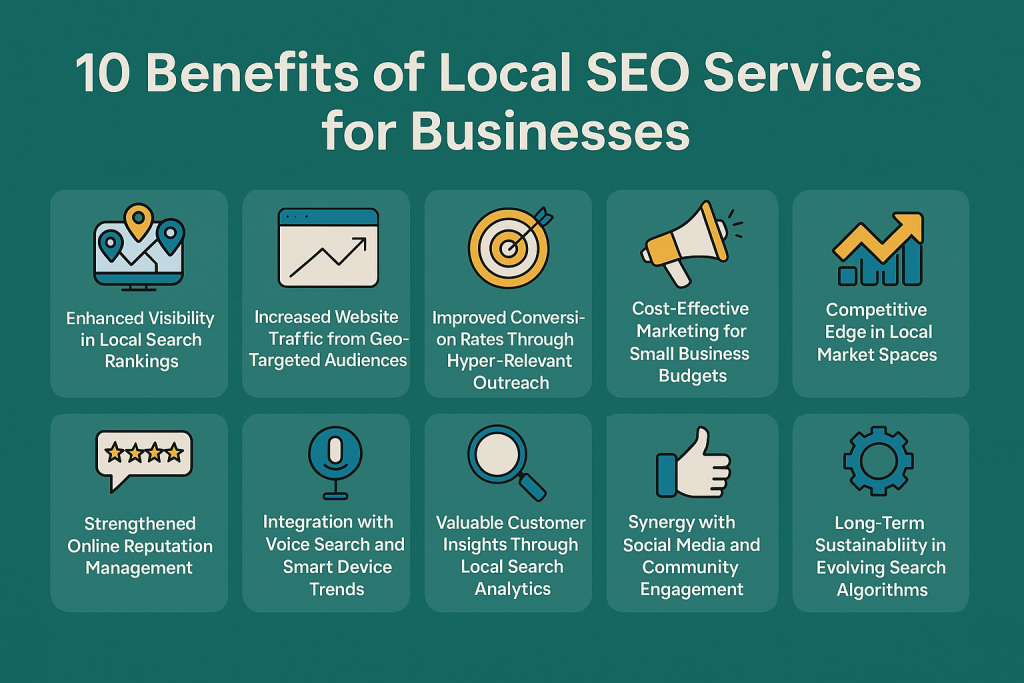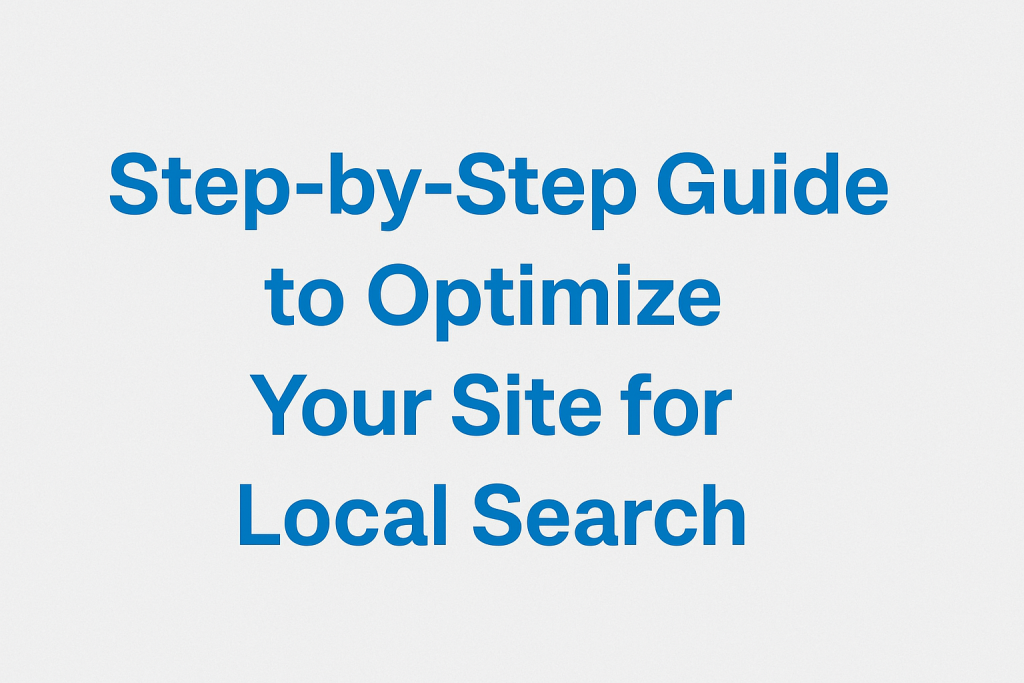10 Benefits of Local SEO in 2025: Maximizing Visibility for Your Business

Sanya Kaushal
Sanya is a seasoned SEO and content writing expert with a 10 years of experience. She is skillfully driving organic growth and crafting search-optimized content that engages audiences and elevates brand visibility across industries.
I’m excited to share 10 years of my experience about Local SEO, ie. Local Search Engine Optimization. Whether you’re a small business owner with local customers or just curious about how Local SEO can skyrocket your visibility, this guide is your go-to resource.
Let’s dive in, and I promise to keep everything really simple!

What is Local SEO?
Local SEO means optimizing your website and digital profiles so that your business shows up when someone looks up services in your area. It’s different from the general SEO that focuses on a broad, global audience. Think of Local SEO as a way to connect with the people right in your neighborhood.
For example, if someone types “best coffee shop near me” into Google, you want your café to be one of the top results in local rankings. This involves using local keywords, maintaining your Google My Business profile, and creating content that specifically ties your business to a location.
How Local SEO Differs from Traditional SEO Strategies
While traditional SEO covers the whole web, Local SEO is all about the area where you operate. Traditional methods might focus on high-volume keywords that anyone anywhere can search, but here you’re zoning in on local phrases like “plumber in Dallas” or “pizza delivery in Brooklyn.”
Additionally, Local SEO stresses managing local citations (mentions of your business on review sites and directories) and collecting positive local reviews. It’s like having a very focused net that only catches the fish in your local pond!
Key Components of an Effective Local SEO Framework
There are a few simple but crucial parts of local SEO that I’ve learned work best over the years:
NAP Consistency: Ensure your business Name, Address, and Phone number are identical everywhere online. Inconsistencies can confuse both search engines and your potential customers.
Google Business Profile: Your Google Business Profile (or GBP) is like your online storefront. It is the go-to resource to find local businesses. This means that your profile should be updated with your latest business hours, photos, and service descriptions.
Online Reviews: These are the digital word-of-mouth recommendations that build trust. Encourage customers to leave reviews and respond to them promptly.
Localized Content: Create blog posts, service pages, and FAQs that specifically mention your location. This tells Google where your business operates and how it serves the local community.

What is the Importance of Local SEO in 2025
In 2025, the digital marketplace is more competitive than ever, and local SEO is not just an option—it’s essential. Almost 87% of consumers rely on local search to find businesses near them.
Let me explain how this shapes the future of local commerce.
Rising Dominance of "Near Me" Searches and Mobile Usage
These days, over 76% of local searches include the phrase “near me,” and most of these are done on mobile devices. People are out and about, using their phones to quickly locate a nearby restaurant, shop, or service.
This trend means if your business isn’t optimized for mobile, you might be missing out on a huge number of customers who are ready to visit your storefront now.
Impact of Local Search Results on Consumer Decision-Making
When someone searches for something locally, they are usually ready to decide fast. For instance, getting featured in the “local pack” (the top three results on Google Maps) can capture about 92% of all clicks in that space. Even if you’re ranked third, it can boost your traffic by as much as 18%.
This direct connection between local search placement and consumer behavior means every adjustment you make in your local SEO strategy can translate directly into more foot traffic and sales.
Bridging Online and Offline Business Experiences
Local SEO isn’t just about online visibility—it’s the bridge between your online presence and your real-world business. Features like click-to-call buttons and tools that show “Product in Store” details help customers transition smoothly from a digital search to stepping into your shop.
When your online information matches what customers experience in-store, it builds trust and leads to more business.
10 Benefits of Local SEO Services for Businesses
I’ve found that Local SEO offers some major benefits that can truly transform your business.
Let’s break down the top 10 benefits in simple terms.

1. Enhanced Visibility in Local Business Search Rankings
When you optimize for local SEO, your business shows up in local search results and on Google Maps, so customers in your area can easily find you. Enhanced visibility means that people who are already interested in your type of service will see your business first.
2. Increased Website Traffic from Geo-Targeted Audiences
By using location-specific keywords, you’re attracting visitors who are looking for businesses exactly like yours in your area. These geo-targeted users are more likely to convert because they’re already in your neighborhood.
3. Improve Your Local SEO With Higher Conversion Rates Through Hyper-Relevant Outreach
Since local SEO targets users based on their specific location, the leads generated are much more relevant. In fact, hyper-relevant outreach through local SEO can improve your conversion rates significantly, as local leads tend to convert at higher rates.
4. Cost-Effective Marketing for Small Business Budgets
One of the best parts about local SEO is its affordability. Instead of spending heavily on paid advertisements, you can drive organic traffic from people who are searching for your services right now. This cost-effective approach is perfect for small businesses operating on tight budgets.
5. Competitive Edge in Local Market Spaces
Local SEO gives you a direct edge over your local competitors. By optimizing your Google Business Profile and maintaining consistent information, you can outrank nearby rivals, ensuring that your business stands out when customers search locally.
6. Strengthened Online Reputation Management
Collecting and managing online reviews is critical. When you respond to reviews and maintain a strong reputation, you build trust with potential customers. A great online reputation translates into increased customer loyalty and visibility.
7. Integration with Voice Search and Smart Device Trends
With the rise of smart devices like Alexa and Siri, more people are using voice search. Local SEO helps your business capture these queries, ensuring that you’re the go-to solution when someone asks, “Hey Siri, find a nearby restaurant.”
8. Valuable Customer Insights Through Local Search Analytics
Local SEO tools provide insights about your customer’s behavior—what they search for, when they search, and how they interact with your website. These insights are invaluable for fine-tuning your marketing strategies and boosting your overall performance.
9. Synergy with Social Media and Community Engagement
When your local SEO is on point, it complements your social media efforts. Regular updates, local events, and community engagement all work together to strengthen your brand presence. People love to support businesses that are active in their local community.
10. Long-Term Sustainability in Evolving Search Algorithms
Search engines update their algorithms all the time. A solid local SEO foundation makes sure that your business remains visible even as these changes occur. This long-term sustainability is key to keeping your traffic and sales growing over time.
Critical Local SEO Statistics Every Business Should Know
Numbers always help in making the case. Here are some critical statistics that highlight just how essential local SEO is for your business to appear in local search results.
Market Share Analysis of Local vs. Global Search Queries
Around 46% of Google searches are looking for local information. This means nearly half of all search queries are local in nature, showing just how relevant local SEO has become in the digital landscape.
Conversion Rate Comparisons: Local vs. Generic Results
About 78% of local mobile searches lead to an offline action—like a visit to your store or a phone call. This powerful correlation shows that local SEO on mobile devices is a direct driver of business.
ROI Metrics for Local SEO Implementation
Investing in local SEO can deliver a return on investment of up to 5:1 for small businesses. For every dollar spent, you could see five dollars in return, making local SEO a smart, measurable investment.
Local SEO Strategies for Small Business Dominance

If you’re a small business owner, the right local SEO strategies can help you dominate your market by increasing visibility in local search results. Let’s go over some actionable tactics that I’ve used and seen work wonders over the years.
Optimizing Google Business Profile for Maximum Impact
Your Google Business Profile is the cornerstone of your local SEO strategy. First, verify your listing and ensure that your business details—like hours, services, and photos—are always up to date. Use local keywords in your description so that your profile tells a compelling local story.
Leveraging Localized Content Marketing Approaches
Content is king in SEO, and localized content is its spark plug. Write blog posts or create guides that show off your expertise in your area. Whether it’s a “Best [Service] in [City]” guide or a discussion of local events, localized content speaks directly to your community and builds trust.
Managing Online Reviews and Local Citations Effectively
Online reviews boost your credibility, so always respond, thank your customers, and address any concerns. Ensure your NAP details are consistent across local directories such as Yelp, Yellow Pages, and others. This consistency helps search engines validate your business information and improves your overall ranking.
Technical SEO Adjustments for Local Search Optimization
Even simple technical tweaks can make a huge difference. Focus on mobile-first optimization to cater to the increasing number of mobile searches. Speed up your website’s load time (aim for less than three seconds) and include schema markup to help search engines better understand your local business details.
Mastering Local Search Ranking Factors
To really excel in local SEO, it’s crucial to understand the various factors that influence search rankings. These details may seem a bit technical, but they’re super important for long-term success.
Essential Components of Local Search Algorithms
Search engines use a mix of factors to rank local businesses. This includes relevance, distance, and prominence. Relevance means how well your business matches the search query, distance measures how far you are from the searcher, and prominence is about your online presence, like reviews and citations.
Importance of NAP Consistency Across Digital Platforms
Consistency in your Name, Address, and Phone number across every platform is non-negotiable. Any discrepancies can confuse search engines and hurt your rankings. Keep it consistent everywhere from your website to your social media profiles and local directories.
Role of Localized Schema Markup Implementation
Schema markup is like a secret code that tells search engines exactly what your business is about. By implementing localized schema, you provide detailed information about your business hours, location, and services. This additional data makes it easier for search engines to display your business accurately in local searches.
Mobile-First Optimization for Location-Based Queries
With most users searching on mobile devices, your website must be optimized for a mobile-first experience. Ensure that your website design is responsive, that all buttons and phone numbers are clickable, and that the loading speed is optimal for mobile users.

Step-by-Step Guide to Optimize Your Site for Local Search
Ready to get your hands dirty and optimize your website for local search? Here’s a step-by-step guide that breaks everything down into manageable actions.
1. Conducting Comprehensive Local Keyword Research
Start by researching keywords that people in your area are using. Use tools like Google’s Keyword Planner, Ahrefs, or BrightLocal. Focus on phrases like “plumber near me” or “best bakery in [City].” Once you have a list of keywords, plan how to naturally integrate them into your site’s content.
2. Creating Location-Specific Landing Pages
If your business serves multiple locations, create dedicated landing pages for each. For example, if you’re a cleaning service in multiple cities, have separate pages like “Cleaning Service in Atlanta” and “Cleaning Service in Miami.” Each page should speak directly to the local audience with tailored content and contact information.
3. Developing Local Link Building Strategies
Build relationships with local bloggers, news outlets, and community organizations. Local backlinks from trusted sources can boost your domain authority and help you rank higher in local searches. Think of this as networking for your website—every link is like a recommendation from a friend in your community.
4. Implementing Local Service Area Structured Data
Finally, make sure your website uses structured data to highlight your service areas. Use JSON-LD schema markup to provide search engines with details about your business location, operating hours, and specific services. This technical adjustment ensures your local information is clear and accessible.
Avoiding Common Local SEO Pitfalls
While Local SEO can be a game-changer, there are common mistakes that can hold you back. Avoid these pitfalls to keep your strategy on the right track.
Critical Mistakes in Local Citation Management
Duplicate or incorrect citations can confuse search engines. Regularly audit your online listings to ensure that your business details match across all platforms. Correct any discrepancies immediately to maintain your credibility.
Over-Optimization Risks in Local Keyword Usage
It might be tempting to cram your content with local keywords, but over-optimization can hurt your rankings. Instead, use keywords naturally within well-written, engaging content. Remember, quality always beats quantity.
Neglecting Mobile User Experience Considerations
With so many searches happening on mobile devices, a clunky mobile experience can drive customers away. Ensure your website is responsive, loads quickly, and has easy-to-click call-to-action buttons.
Inconsistent Business Information Across Platforms
If your business information isn’t consistent online, customers and search engines might get confused. Double-check that your NAP details are exactly the same everywhere—on your website, Google Business Profile, social media, and directories.
Future-Proofing Your Local SEO Approach
The digital world is always evolving, so it’s important to prepare your local SEO strategy for the future. Let’s look at some forward-thinking approaches to keep you ahead of the curve.
Adapting to Emerging Voice Search Patterns
Voice search is quickly becoming a primary way people search for local information. Optimize your content by including conversational phrases that mirror how people speak. This means thinking about questions like “Where can I find a good Italian restaurant nearby?” rather than just using static keywords.
Preparing for AI-Driven Local Search Innovations
Artificial Intelligence is set to change how search engines deliver local results. Stay informed about AI trends in SEO and be ready to adapt your strategy as AI tools start to influence local search rankings. This proactive approach can give you an edge over competitors.
Integrating Local SEO with Omnichannel Marketing
Local SEO shouldn’t exist in a bubble. Combine your online and offline marketing efforts—use social media, email marketing, and even in-store promotions to reinforce your digital presence. A seamless omnichannel approach ensures your customers receive a consistent message everywhere they interact with your brand.
Anticipating 2026 Local Search Trends and Updates
The future is unpredictable, but one thing is clear—local SEO will continue to evolve. Keep an eye on emerging trends, update your strategies regularly, and be ready to pivot if necessary. By staying agile, you’ll be well-prepared to handle whatever changes come next.
Wrapping up, I hope this guide gives you a clear roadmap on how to harness the power of Local SEO for your business. With these detailed strategies and practical tips, you’re now armed with the knowledge to boost your local visibility, attract more customers, and stay ahead in this competitive digital landscape.
Whether you’re just starting out or looking to refine your existing efforts, remember that consistent effort, genuine community engagement, and a willingness to adapt are the keys to long-term success.






